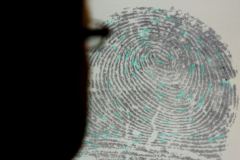 The case of Simon Hall in the UK has already made the headlines time and again, for all the wrong reasons. See just some of the coverage of the case collated here… and you can visit Simon’s great campaign website ‘Justice 4 Simon’ here… . This is an apparent miscarriage of justice that has gone on for far too long.
The case of Simon Hall in the UK has already made the headlines time and again, for all the wrong reasons. See just some of the coverage of the case collated here… and you can visit Simon’s great campaign website ‘Justice 4 Simon’ here… . This is an apparent miscarriage of justice that has gone on for far too long.
Now, another shocking twist in the tale.
Simon’s conviction rests on fibre analysis. For his appeal, a highly respected independent expert in fibres analysis – Tiernan Coyle, was employed to re-examine the evidence used to secure Simon’s conviction. He found multiple flaws in the evidence, and had no doubt that the conclusions reached were unsustainable. Unfortunately, this was not sufficient to win Simon his appeal.
 As a respectable scientist, Tiernan Coyle then sought to publicise his findings to the wider forensic science community, sending his report to the scientific journal ‘Science and Justice’. Peer reviewers used terms like ‘valid’, ‘compelling’ and ‘highly convincing’ in their reviews, and commented on Coyle’s professional approach to the issues raised by the case, as well as stating that the report raises important issues that the fibres community needed to debate, which justified its publication. It was duly accepted and published. Subsequently, the article was withdrawn from Science and Justice, supposedly for ‘copyright’ reasons (the article showed images from the Forensic Science Service’s original analysis – although these images were used in the bundle of evidence at the trial and appeal so have been seen by anyone with access to the evidence).
As a respectable scientist, Tiernan Coyle then sought to publicise his findings to the wider forensic science community, sending his report to the scientific journal ‘Science and Justice’. Peer reviewers used terms like ‘valid’, ‘compelling’ and ‘highly convincing’ in their reviews, and commented on Coyle’s professional approach to the issues raised by the case, as well as stating that the report raises important issues that the fibres community needed to debate, which justified its publication. It was duly accepted and published. Subsequently, the article was withdrawn from Science and Justice, supposedly for ‘copyright’ reasons (the article showed images from the Forensic Science Service’s original analysis – although these images were used in the bundle of evidence at the trial and appeal so have been seen by anyone with access to the evidence).
Tiernan is then to be congratulated that rather than be silenced by this outrageous withdrawal of his paper from the journal, he has made it publicly available, with a short commentary on the story of how he was driven to this action.
I highly recommend that all those interested in forensic science and justice read the report. It demonstrates clearly how not only are people being wrongly convicted using flawed forensic science, but that even when discovery of flawed scientific conclusions are aired, it may not be enough to win freedom for the wrongly convicted. It is a salutary tale for those convinced that forensic science will end miscarriages of justice. It is also illuminating that while some in the forensic community wish to work to strengthen the scientific basis of their work, and share mistakes and assist in research, there are elements of the community that remain strongly resistant. This cannot be allowed to happen if progress is to be made.
Go to Tiernan Coyle’s website here…






























